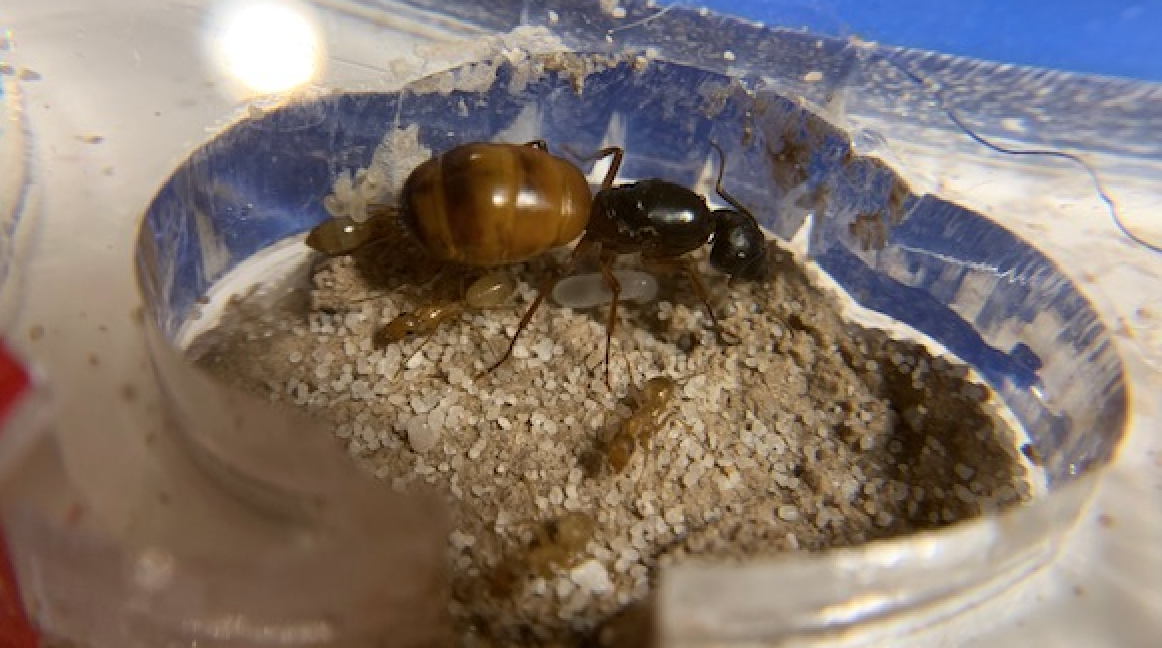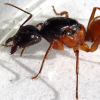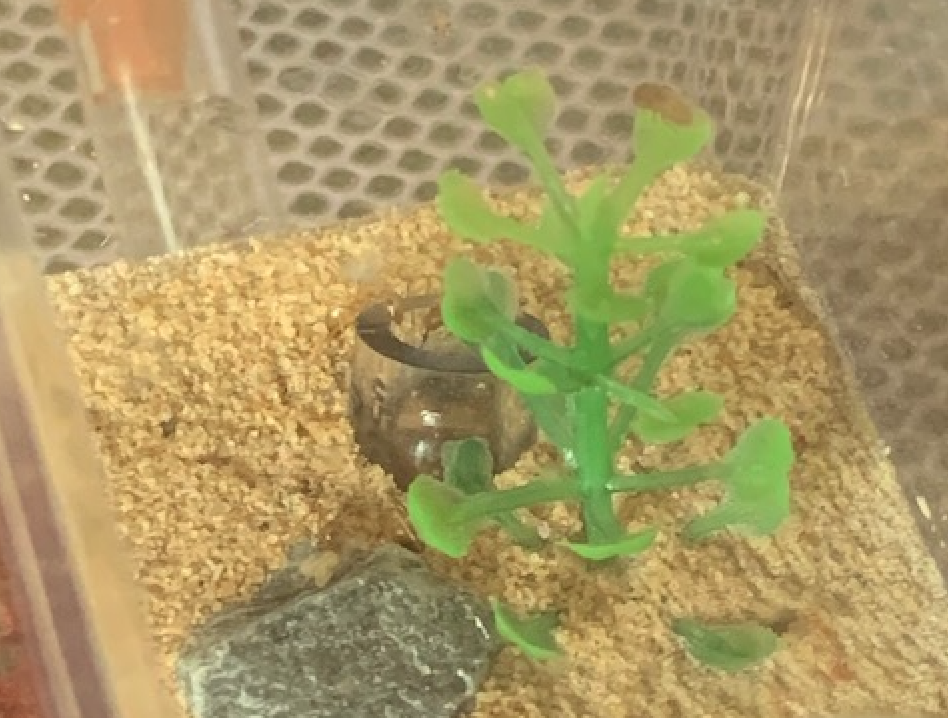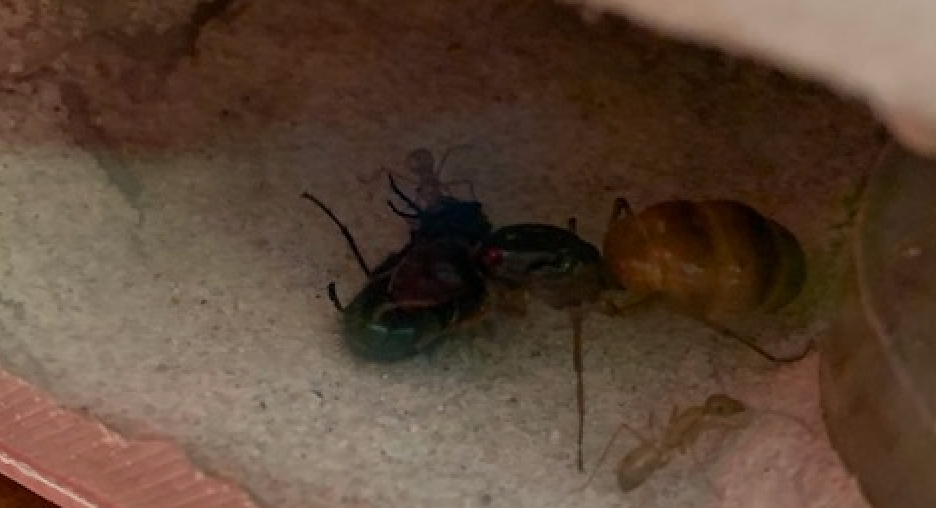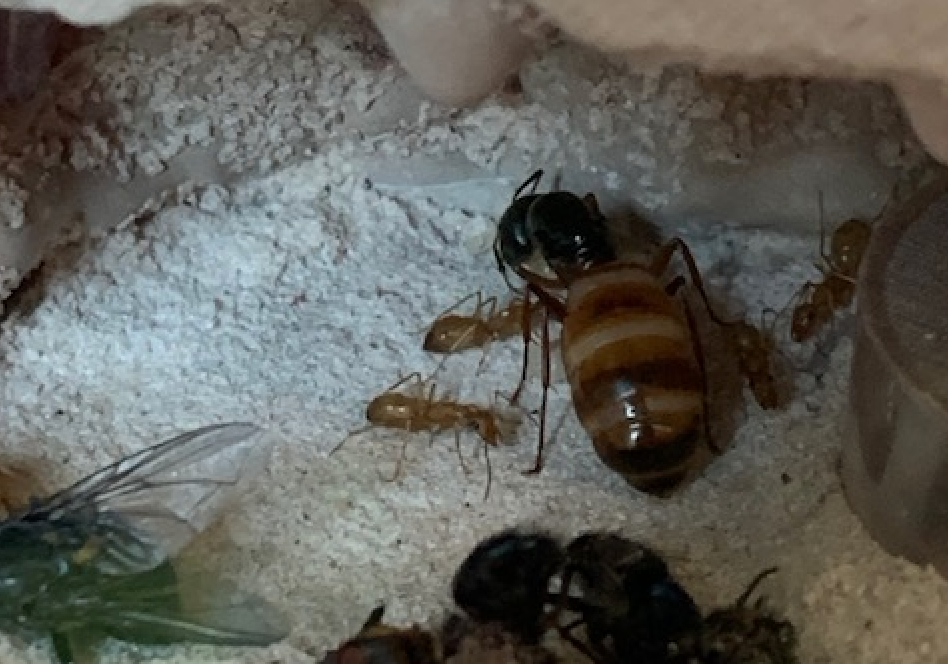Update 2024:
This journal is about Camponotus:
laevigatus ("quercicola")
vicinus
CA02
----
Previously:
These are notes about Camponotus sansabeanus "salsabeans" (starting 2019)
Camponotus vicinus (introduced on page 2, June 2020)
Camponotus quercicola "cola" (introduced on page 2, July 2020)
CA02 (introduced on page 4, May 2021)
and other miscellaneous California Camponotus, except for C. fragilis, which has its own journal.
C. sansabeanus are:
- Primarily nocturnal
- The queen is HUGE and darker than the workers. The workers are about the same size and just slightly darker than C. fragilis, but while the C. fragilis queen is just slightly bigger than her workers and has the same coloration, the C. sansabeanus queen is gigantic and much darker and makes a big impression on kids. (I understand sansabeanus queens are only a bit smaller than Ca02 queens.)
- The queen is AGGRESSIVE. Every other colony I have, queens aren't that interested in getting into fights. This queen, however, seems to know her nanitics are derpy and is practically the first to march over and bite, bite, bite, spray, spray, bite, make sure it's dead, then stalk away. I tell kids she's the "Mean Queen" and they love it.
- THEY DO TAKE A BREAK IN WINTER! This is the biggie that got me.
C. vicinus are:
- Apparently both diurnally and nocturnally active.
- I've heard that high altitude vs. low altitude vicinus (at least in California) have different winter diapause temperature needs, with high altitude needing wine cooler temperatures.
- I've heard that high altitude queens are larger than lowland queens.
- Colors apparently vary, but seem to be primarily shades of brown and black, often both.
------------
I purchased a small colony of C. sansabeanus with 9 workers in August of 2019.
Anyway, I had problems getting heating for my ants, as mentioned in my other journals.
I had this queen in a test tube in a plastic makeshift outworld for a while. Then I moved her to a fake mini-hearth (not a THA creation, pretty similar, but no nestmates and bigger).
Autumn 2019:
Brood did not develop.
House temps were around 80 F, going down to low-to-mid-70's in the winter.
I started heating my other colonies (with 90F heating mat) and their numbers skyrocketed, but for another month or so I didn't have room for the poor salsa queen.
By the time I had heating late in 2019 there was still no brood development. They had a few eggs or tiny larva and one partially developed larva.
Winter 2019:
I stuck them in the unheated but mid-60's garage starting mid-December.
Then in preparation for taking them to school, I brought them in and tried an experiment where I heated them for a few weeks in January 2020.
No brood development, even with heat.
I moved them to a spare Chinese-made acrylic formicarium to which I added a grout floor. I did this because the fake mini-hearth did not have enough means of providing them with water and I was getting worried it wasn't good for them.
No brood development, even with heat and adequate moisture.
I took them to school in January 2020 - by this time the 9 workers were down to 6 - and they were a huge hit because of the size of the queen. (Esp. after seeing Tetras, Veros, C. fragilis etc. - great to have this species last in line.)
Shortly thereafter as per advice I put them back in the garage (late January 2020), even though temps aren't even wine cooler range, and were still mid-60's F.
Late February 2020
I checked on them in the garage twice. The first time no change. I watered them. The second time the one medium-sized larva looked BIGGER.
So as of roughly February 21st, 2020 they are back inside, ON HEAT (85F for now, will raise to 90F later). 6 workers, and finally one developing larva.
Conclusion: So although they didn't get the full cold treatment, their brood DEFINITELY went on diapause.
They haven't been very hungry but hopefully with heat on they will get hungry and I can note what they like to eat. They have so far ignored a lot of food as well as bird urea and the like. Though the queen has been willing to kill stuff they've tended to leave the bugs lying around.
Edited by OhNoNotAgain, June 27 2024 - 5:25 PM.




